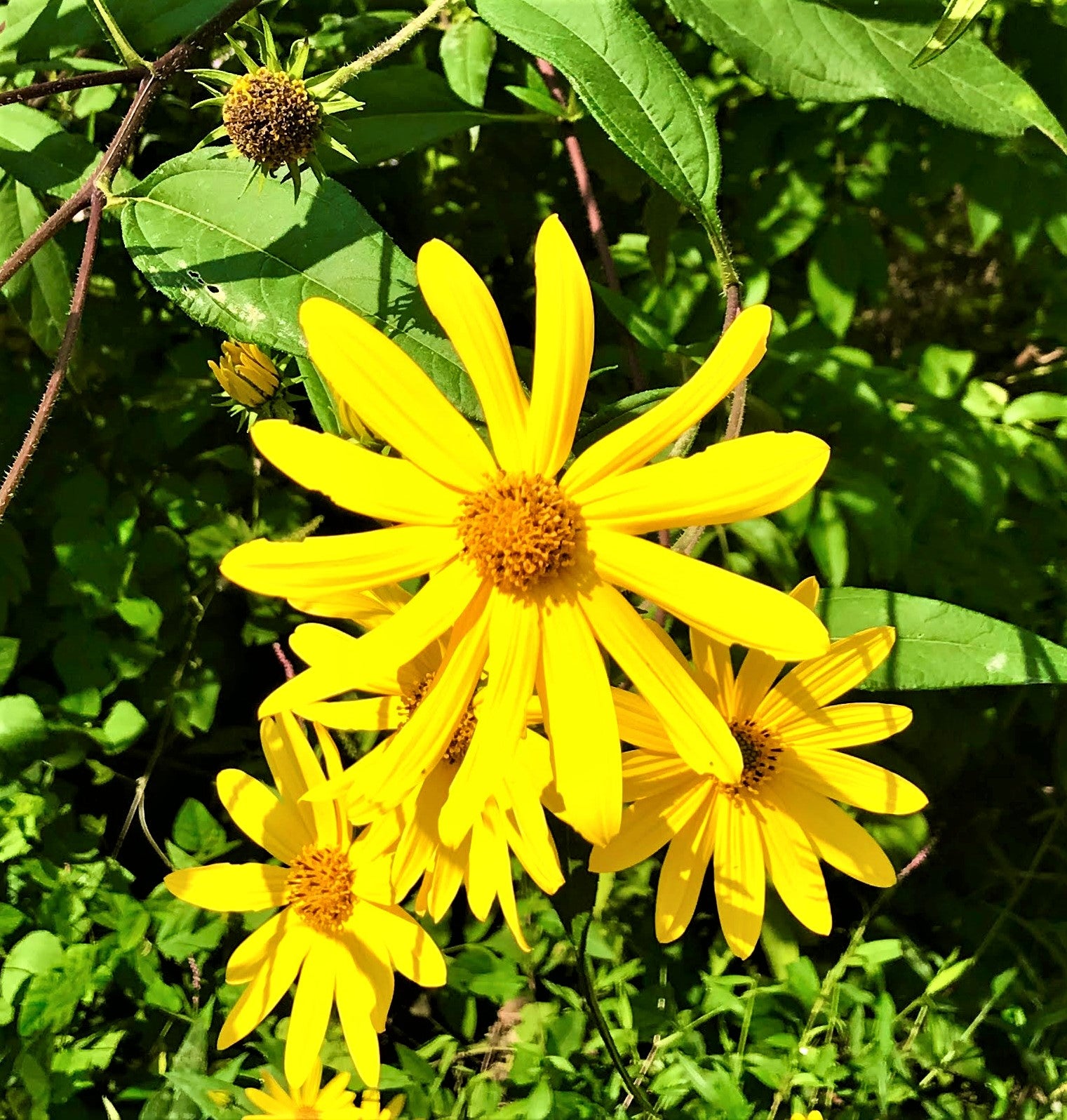OUTSIDE: A taste on the wild side — Jerusalem Artichoke
Published 3:45 pm Tuesday, October 6, 2020
|
Getting your Trinity Audio player ready...
|
By Steve Roark
Cumberland Gap National Historical Park
The late summer/early fall season puts on a good flower show in our area, especially asters, those daisy-and sunflower-like species that come in a variety of colors, yellow in particular.
One species that is not only pretty to look at but can also be enjoyed as a seldom-used vegetable is Jerusalem Artichoke (Helianthus tuberosus).
Of all the yellow asters of the fall season, Jerusalem Artichoke is a giant, growing up to 10 feet tall with sunflower-like flowers around two to three inches across with 10 to 20 petals and a yellow central disc.
The leaves are large and rough to the touch, forming in opposing pairs (opposite) at the bottom of the plant but singly (alternate) at the top.
They usually grow in small colonies, spreading by producing tubers underground, something other sunflowers do not do.
It’s these tubers that make the Jerusalem artichoke worth a closer look. They develop on the roots starting around bloom time (mid-August) and continue to enlarge until hard freezes kill the top.
They are elongated and bumpy, looking sort of like ginger root you see at the grocery store.
They vary in color from white to pale brown to reddish.
Native Americans have used the tubers as a root vegetable for centuries. Initially, they were collected from the wild, but they were valued enough to eventually be cultivated as a food source.
Early European colonists picked up on this and began using them as well.
The French explorer Samuel de Champlain is credited with bringing the Jerusalem Artichoke to Europe, where it was liked so much that it became a common garden vegetable by the mid-1600s.
The journals of the Lewis and Clark expedition mentions being served cooked tubers by several native tribes they encountered.
The tuber tastes like a water chestnut when raw and is used in salads.
They can be cooked any way potatoes are used, but get too mushy if overcooked, so steaming in probably the best way to cook them.
Jerusalem Artichokes are available in high-end grocery stores often under the name Sunchokes.
If you want to give Jerusalem Artichokes a try, first always get permission from the landowner before harvesting anything.
Make sure you know how to identify the plant, so get to know a botany geek or use guidebooks.
Once identified, mark the site where they are growing so you can find them after the top has been killed. It’s best to wait a few weeks after a killing frost to harvest the tubers, as this allows time for some of the carbohydrate to be converted to fructose, giving them a sweeter taste.
The tubers do not store well, so it’s best to leave them in the ground until you want to use them.
As with any new food, try only a small portion at first in case of food allergies.
So how did a plant that is not from the Middle East and not an artichoke get the name Jerusalem Artichoke? It is thought that Italian settlers in the U.S. called the plant “girasole” (pronounced jee-ruh-sow-lay), which is the Italian word for sunflower. Over time, the name was transformed by English speakers to Jerusalem. Artichoke probably came about because it was described early on as tasting like artichoke hearts.
Steve Roark is a volunteer interpreter at Cumberland Gap National Historical Park.







